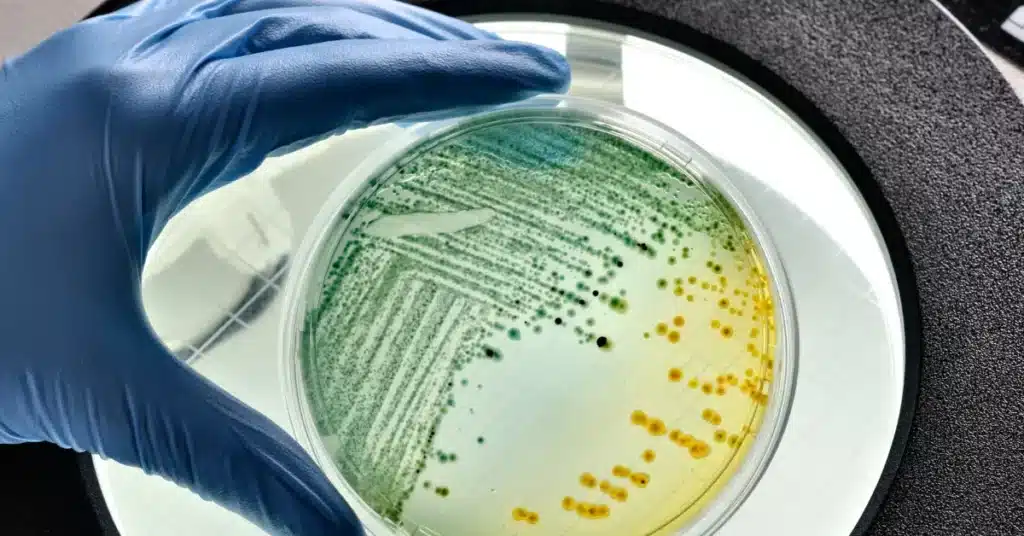Can You Get Epididymitis Without Having an STD?
Epididymitis refers to the inflammation of the Epididymis, a tiny tube situated at the rear of each testis responsible for storing and carrying sperm.
This condition can result in discomfort, swelling, and pain in the scrotal area.
Although commonly associated with sexually transmitted diseases, it’s crucial to understand that Epididymitis can occur independently of an STD.
The typical symptoms include pain while urination, swelling of scrotum, and redness in the testicle area.
Epididymitis treatment usually includes antibiotics for infection and pain relievers or anti-inflammatories for symptom relief.
In this article, we’ll answer how can you get Epididymitis without having an STD and discuss those causes along with symptoms and treatment options.
Epididymitis: Causes without STD
Epididymitis, the inflammation of the Epididymis, may arise from sources other than STDs.
Acute Epididymitis is often linked to two specific STDs: Chlamydia and Gonorrhea.
However, being diagnosed with Epididymitis doesn’t automatically imply the presence of these STDs.
It’s essential to see a doctor to determine the actual cause of the condition.
Here, we’ve listed causes that don’t require STDs and can lead to the condition of Epididymis.
Intensive physical activity
Intense physical activities, extensive cycling or motorcycling, and prolonged sitting can contribute to Epididymitis development.
This is because urine can be forced from the bladder into the Epididymis during strenuous exercise and heavy lifting.
The reaction can result in chemical irritation, manifesting as symptoms such as pain, swelling, and redness in the testicular area.
Bacterial infections

Beyond STDs, bacteria like Escherichia coli can cause Epididymitis, particularly in men with conditions like benign prostatic hyperplasia or those who have had urinary procedures.
- Escherichia coli (E. coli): E. coli, an opportunistic bacterial species usually present in the intestines, frequently causes urinary tract infections and may also lead to the development of Epididymitis.This is particularly true in children and adults over 35 years old, where E. coli is a significant pathogen causing the condition??????
- Haemophilus influenzae: Haemophilus influenzae is a rare cause of Urethritis, which can be associated with Epididymitis. Although not as common as E. coli, it is recognized as a potential bacterial cause in certain cases??
- Ureaplasma urealyticum: In patients with HIV infection, Epididymitis may be caused by various concomitant infections, including Ureaplasma urealyticum. This suggests that Ureaplasma urealyticum can be a cause of Epididymitis in specific situations, particularly in immunocompromised patients??
These causes indicate that while STDs are common causes of Epididymitis, several other bacteria can lead to this condition under certain circumstances.
Mycobacterium Tuberculosis
Chronic Epididymitis, often involving Mycobacterium tuberculosis (TB), is characterized by symptoms lasting over six weeks.
TB, a common granulomatous disease affecting the Epididymis, should be suspected, especially in men with a known history of or recent exposure to TB.
Chronic infectious Epididymitis is frequently observed with conditions associated with a granulomatous reaction??.
A common granulomatous disease refers to an inflammatory disease where the immune system forms granulomas. These are the body’s response to foreign substances or infections, typically seen in conditions like tuberculosis and sarcoidosis.
Noninfectious causes
Noninfectious causes of Epididymitis include trauma, vasculitis (inflammation of blood vessels), medications, and autoimmune diseases.
Paramyxoviruses like the mumps virus are also common causes in younger adults.
Men with obstruction or congenital abnormalities of the urinary tract are at increased risk of developing Epididymitis.
A portion of these cases are idiopathic, meaning their cause is unknown??.
Treatment options for Epididymis
Treatment options for Epididymitis depend on the underlying cause of the inflammation.
Consulting a healthcare provider for a proper diagnosis and tailored treatment plan is crucial.
For patients aged 14 to 35 with probable gonococcal or Chlamydial infections, the suggested treatment is a one-time dose of ceftriaxone given intramuscularly.
This can also be coupled with doxycycline 100 mg administered orally twice a day for a duration of ten days.
Azithromycin can replace doxycycline for better compliance.
For suspected enteric infections in patients younger than 14 or older than 35 or those allergic to cephalosporins or tetracyclines, ofloxacin or levofloxacin is advised.
Immunocompromised patients should receive the same treatment as others.
Supportive treatments like pain relievers, scrotal elevation, activity limitation, and cold packs are beneficial.
Patients should be informed about potential complications and follow-up care. Most cases can be managed outpatient unless complications arise.
Levoflox 750 mg
Conclusion
Epididymitis, while often associated with STDs, can indeed occur from a variety of non-STD-related causes.
These include intense physical activities, bacterial infections from sources like E. coli, and, in some cases, chronic conditions involving Mycobacterium tuberculosis.
Noninfectious factors such as trauma or autoimmune diseases are also potential culprits.
Effective treatment hinges on accurately identifying the underlying cause, whether it involves antibiotics for bacterial infections, pain management, or specific interventions for noninfectious causes.
Medical consultation is crucial for correct diagnosis and treatment, underscoring the importance of not relying on self-diagnosis.
This broader understanding of Epididymitis causes is vital for appropriate medical care and prevention of complications.
Frequently Asked Questions
WowRx uses only high-quality sources while writing our articles. Please read our content information policy to know more about how we keep our content reliable and trustworthy.






